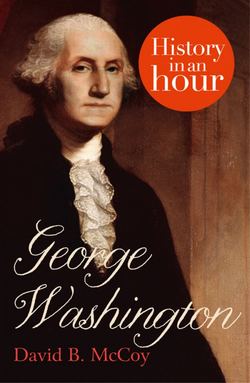Читать книгу George Washington: History in an Hour - David McCoy B. - Страница 6
ОглавлениеEarly Years in the Colony of Virginia
George Washington was born on 22 February 1732 in Westmoreland County, Virginia, son of Augustine Washington, a leading planter in the area. Augustine’s first wife died in 1729, leaving him two sons, Lawrence and Augustine Jr, and a daughter, Jane. Augustine Sr soon married Mary Ball with whom he had six children, the first of which was George. Mary was wealthy in her own right, and reputedly a self-centred and formidable woman. In addition to inheriting her strong health and disposition to endure hardship, George also seemed to have inherited her temper, which he struggled his whole life to control.
By 1738, the family had moved to a plantation near Fredericksburg, Virginia where George spent much of his youth. This period remains the least documented and understood part of his life. Many of the widely accepted fables of George’s youth concern his physical strength and honesty as told by his early (and unreliable) biographer, Mason Locke ‘Parson’ Weems.
The education of a son of a wealthy planter normally included (as it did with George’s older half-brothers) English grammar and arithmetic. Adolescent years would have included instruction in geometry, geography, book keeping and surveying, and would have culminated in a year or two studying abroad in England. Unfortunately, when he reached the age of eleven, his father died and George’s formal education ended. From what little we do know of his education, Washington excelled in mathematics and surveying. As George grew into a young man, he found it increasingly difficult to tolerate his domineering mother, and spent most of his time away from home studying surveying or spending time with his step-brothers, especially Lawrence.
Becoming the ward of his eldest half-brother, George relished spending time at Lawrence’s Mount Vernon estate. Lawrence eagerly assumed the role of mentor, aiding and encouraging George’s studies. More importantly, Lawrence introduced his young charge to the sophisticated world of the Virginia gentry. It was during this time that George captured the interest of the powerful Fairfax family into which Lawrence had married.
With most of his late father’s estate being inherited by his older half-brother, George decided to pursue surveying as his profession. It was a respectable occupation for someone of his social rank, approximately the same status as a doctor or lawyer.
In 1748, George joined a surveying expedition into western Virginia at the invitation of Lord Fairfax, a land-baron and his brother’s father-in-law. Impressed with his skills and work ethic, the Fairfax family secured George an appointment as a county surveyor. By the age of seventeen, he was operating his own surveying business. In the following years, he crossed and re-crossed the Appalachian Mountains, mapping the far reaches of the American wilderness for weeks at a time. He began buying up favourable lands, gradually taking his first steps toward becoming one of Virginia’s wealthiest men. George Washington’s first profession, then, entailed the measuring, understanding and, incrementally, the realising of the American landscape.
Washington the surveyor
The years 1752–1753 marked a turning point in his life. Lawrence contracted an aggressive strain of tuberculosis. Hoping that the tropical climate would help his condition, he travelled to Barbados, accompanied by George. While there, George contracted a case of smallpox, which may have left him sterile. Lawrence’s health did not improve: he returned to Mount Vernon and died in 1752. George was made executor and, at the age of twenty, residuary heir of one of the best estates in Virginia. With this turn of fate, he no longer needed to survey professionally, and turned his attention instead to the running of his various farms and execution of his new duties as an adjutant general in the Virginia Militia.
Washington as the Virginia Colonel
Prior to entering the military, his brother Lawrence held Virginia’s single position of adjutant. After Lawrence’s death, four military districts were created, each needing an adjutant that would be responsible for recruiting and training troops. Seeing a chance to enhance his status in the colony, in 1753 Washington rode to Williamsburg, Virginia’s capital, and petitioned Governor Dinwiddie for an appointment. George had no military training, except for having read two books on the art of warfare, but stood nearly six feet three inches tall – enormous by eighteenth-century averages, and weighed about 220 pounds. Impressed with the young man’s presence and spirit, Dinwiddie appointed him adjutant to one of the four military districts.
